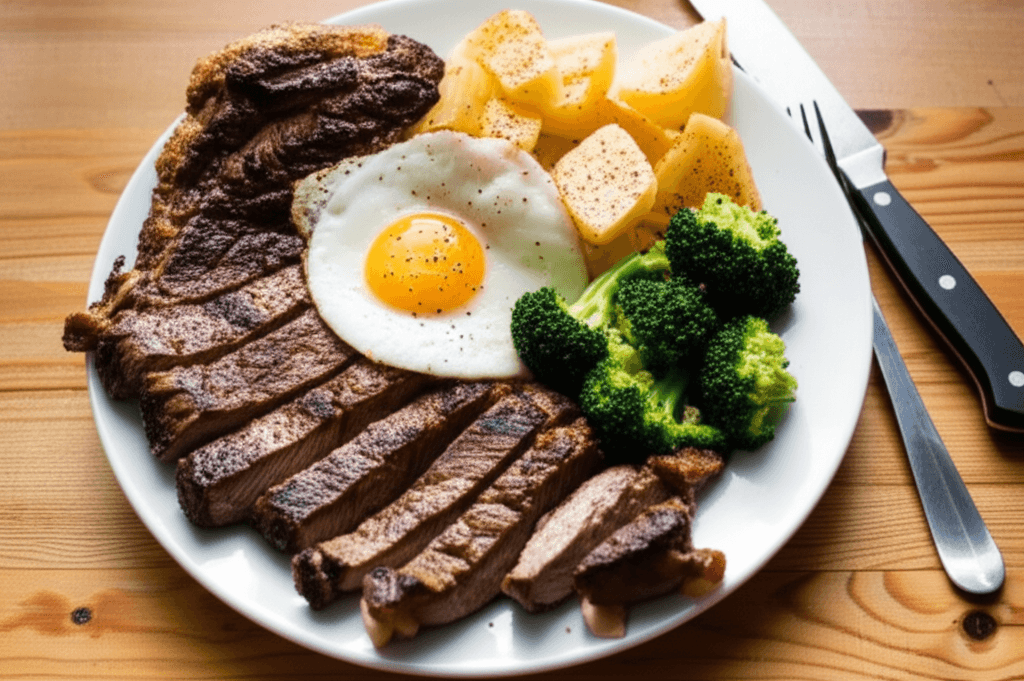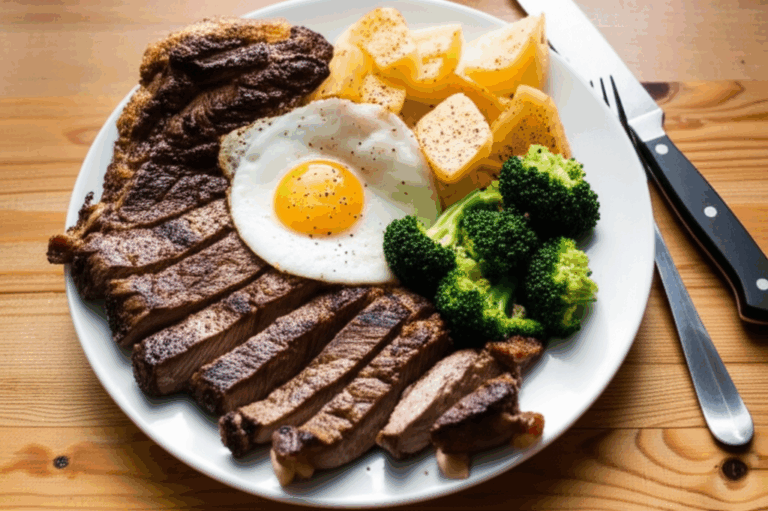Brock Lesnar, known as “The Beast Incarnate” in WWE and a former UFC Heavyweight Champion, maintains an awe-inspiring physique and unparalleled strength through an incredibly disciplined diet and a grueling workout regimen. His approach combines heavy weightlifting, high-intensity circuit training, and combat drills to build strength, endurance, and explosive power, reflecting years of athletic conditioning.

Fueling the Beast: Brock Lesnar’s High-Calorie, Protein-Packed Diet
To support his intense training and recovery, Brock Lesnar consumes a balanced, high-calorie diet with a significant focus on protein, aiming for approximately 3,200 calories daily. His dietary philosophy emphasizes clean, wholesome foods, a stark contrast to past dietary mistakes that reportedly led to health issues.
Protein Powerhouse: Meat, Chicken, and Fish
Lesnar prioritizes high levels of protein to support muscle growth and repair. He prefers meat from a butcher’s shop over store-bought alternatives, often consuming game meat which is known for being low in fat and cholesterol, and free from added antibiotics or hormones. His meals frequently include substantial portions of chicken breasts and fish.
Complex Carbohydrates and Fresh Produce
Beyond protein, Lesnar incorporates complex carbohydrates like brown rice and potatoes to fuel his demanding workouts. He also emphasizes the importance of fresh, homegrown vegetables, noting their higher nutrient content compared to store-bought produce.
Hydration and Supplementation
Hydration is a key component of Lesnar’s diet, with a daily intake of at least a gallon of water. He also uses various supplements to aid in recovery and performance, including whey protein, ZMA, multivitamins, BCAAs, creatine monohydrate, fish oil, and glutamine. While he was on a special keto diet as of 2022, his overall approach remains balanced and nutrient-dense.

The Brutal Regimen: Brock Lesnar’s Workout Philosophy and Structure
Lesnar’s workout philosophy is centered on functional training, mimicking movements essential for his performance in the ring or octagon. He believes in consistency and incorporating variety to prevent plateaus, pushing himself to the limits, often in extreme conditions, to build both mental and physical resilience. He doesn’t believe in marathon gym sessions, stating that if he’s in the gym longer than an hour, “then I wasted an hour!”
Daily Warm-ups and Combat Drills
Before transitioning to weightlifting, Lesnar dedicates time to specific combat drills. His routine typically begins with 10 minutes of wrestling and grappling, followed by 25 minutes of striking, including ground-and-pound drills to develop explosive movement.
Structured Training Split
Lesnar follows an advanced 12-week program, training four intense days per week, with a focus on different muscle groups to ensure balanced strength and performance.
Day 1: Chest and Triceps
This session focuses on building pushing power and upper body strength. Exercises include bench press (6 sets of 12 reps), incline dumbbell press (4 sets of 10 reps), dumbbell fly (3 sets of 8 reps), cable crossovers (3 sets of 8 reps), tricep dips (4 sets of 10 reps), cable tricep extensions (4 sets of 10 reps), and skull crushers (3 sets of 10 reps).Day 2: Back and Biceps
This day targets upper-body pulling strength. Workouts include wide-grip, medium-grip, and narrow-grip pull-ups (4 sets of 6 reps each), seated cable rows (4 sets of 6 reps), stiff-legged deadlifts (4 sets of 6 reps), deadlifts (4 sets of 6 reps), preacher curls (4 sets of 12 reps), hammer curls (3 sets of 10 reps), and incline dumbbell curls (3 sets of 10 reps).Day 3: Shoulders
Dedicated to shoulder strength and size, this day features military press (4 sets of 10 reps), seated dumbbell press (3 sets of 10 reps), dumbbell front raises (3 sets of 10 reps), dumbbell lateral raises (3 sets of 10 reps), Smith machine upright rows (3 sets of 6 reps), and dumbbell or barbell shrugs (4 sets of 6 reps).Day 4: Legs
The final workout day focuses on lower-body strength, power, and endurance, including exercises like leg extensions (3 sets of 10 reps), leg curls (3 sets of 10 reps), Smith machine narrow stance squats (4 sets of 6 reps), Smith machine squats (4 sets of 6 reps), Smith machine wide stance squats (4 sets of 6 reps), leg press (4 sets of 6 reps), and stiff-leg deadlifts (4 sets of 6 reps).
Circuit Training for Endurance and Conditioning
After combat drills, Lesnar transitions into circuit training to push his endurance and overall conditioning. These high-intensity, full-body circuits improve muscular stamina, cardiovascular endurance, and coordination. An example circuit includes:
- Round One (Pushing Endurance): Spiderman push-ups, plyometric push-ups, punching from the mount, tire push, and hand switching.
- Round Two (Pulling Endurance): Recline pull-ups, bodyweight pull-ups, tire pulling, jumping pull-ups, and heavy bar twirling over the shoulders.
- Round Three (Cardio Endurance): Airdyne biking, UBE machine, and incline treadmill sprints.
- Round Four (Strength Training Endurance): Jammer machine, one-arm sledgehammer work, medicine ball sprawls, and bear crawls.
Explosive Strength and Power Development
Lesnar’s training heavily incorporates heavy compound lifts and explosive movements to develop raw strength and power. Exercises like deadlifts, squats, and bench presses recruit multiple muscle groups, enhancing force production. Explosive training, such as ground-and-pound drills and plyometric circuit training, also contributes to increased tendon stiffness, which is crucial for force production and movement efficiency.
Brock Lesnar’s rigorous diet and brutal workout routine are a testament to his unwavering commitment to maintaining peak physical condition, enabling him to dominate in both the wrestling and mixed martial arts arenas.







